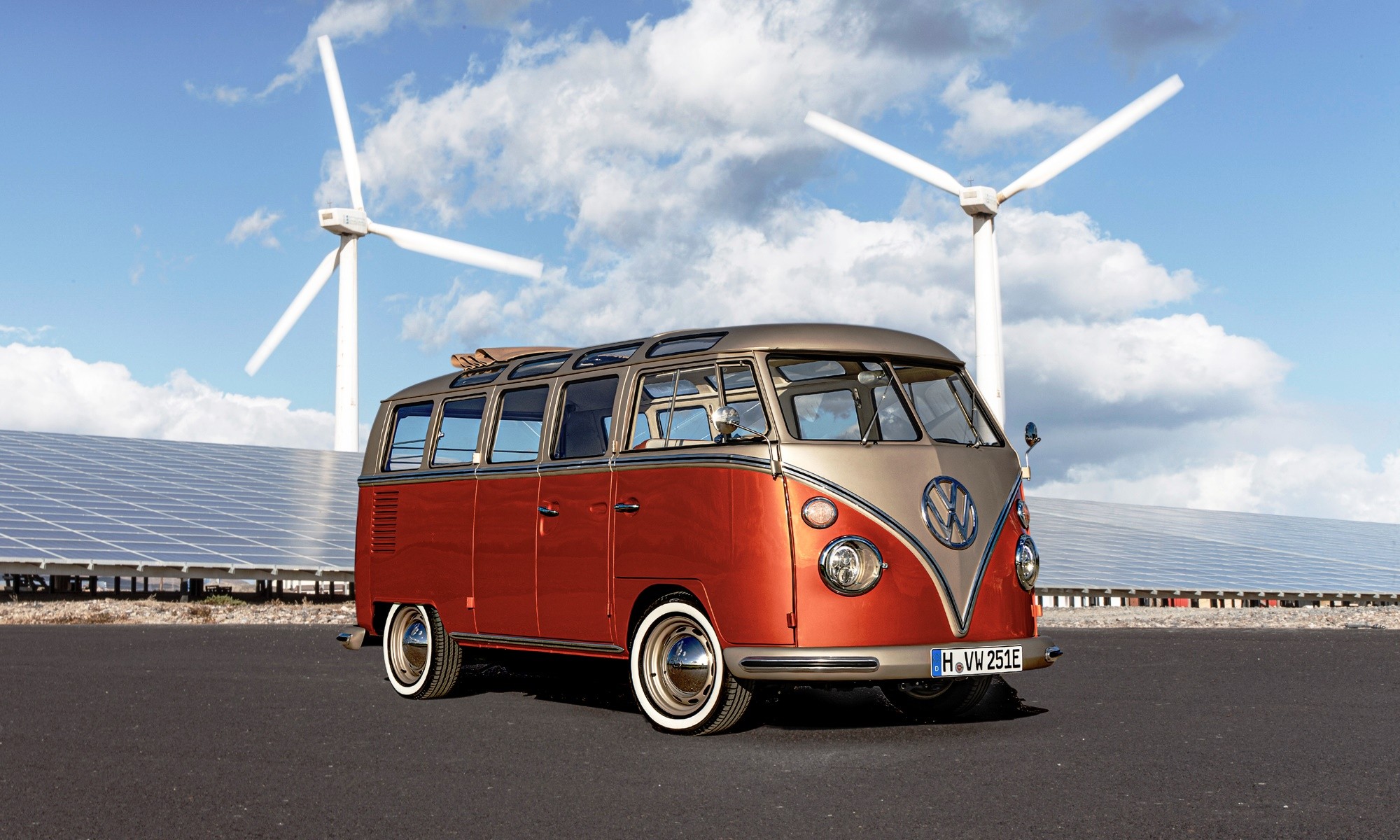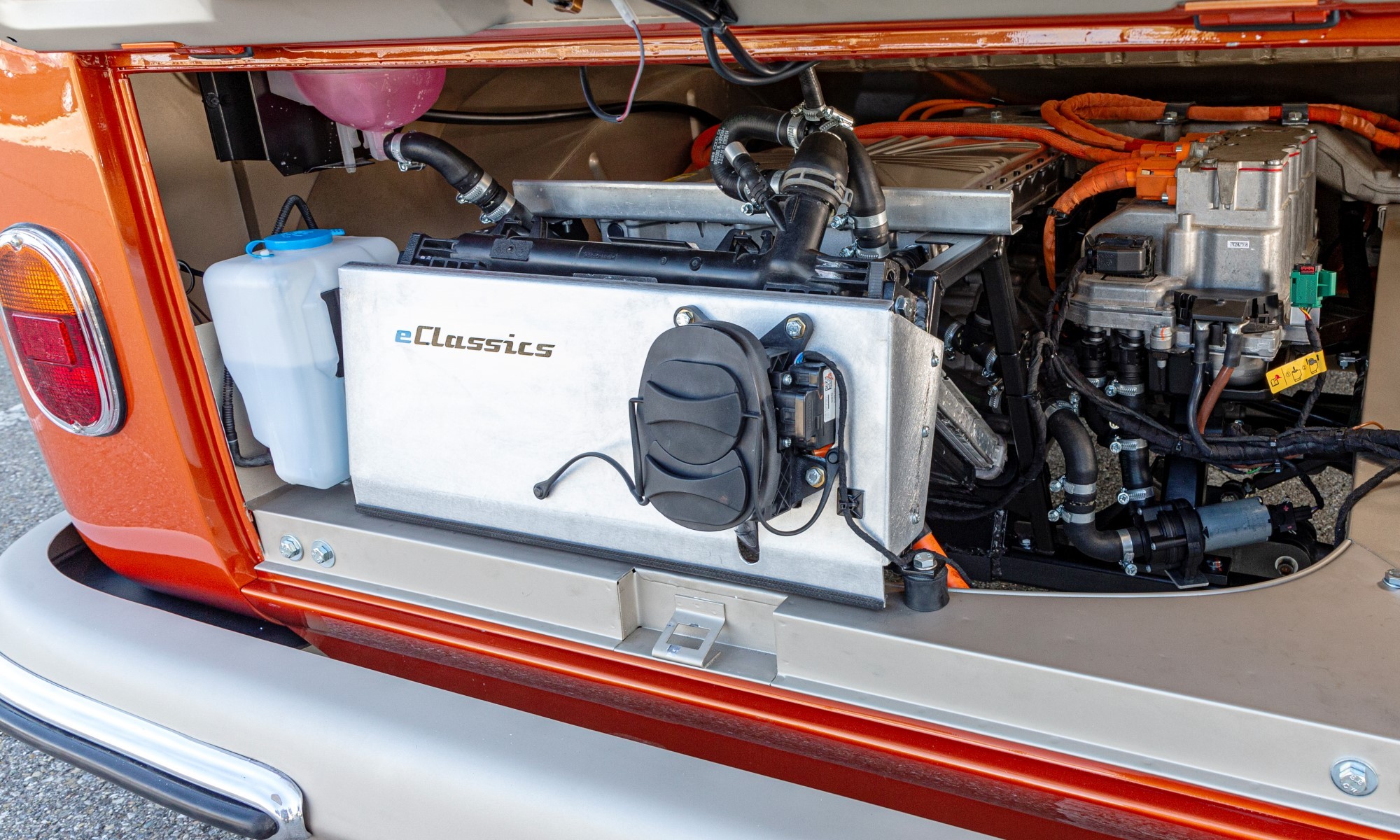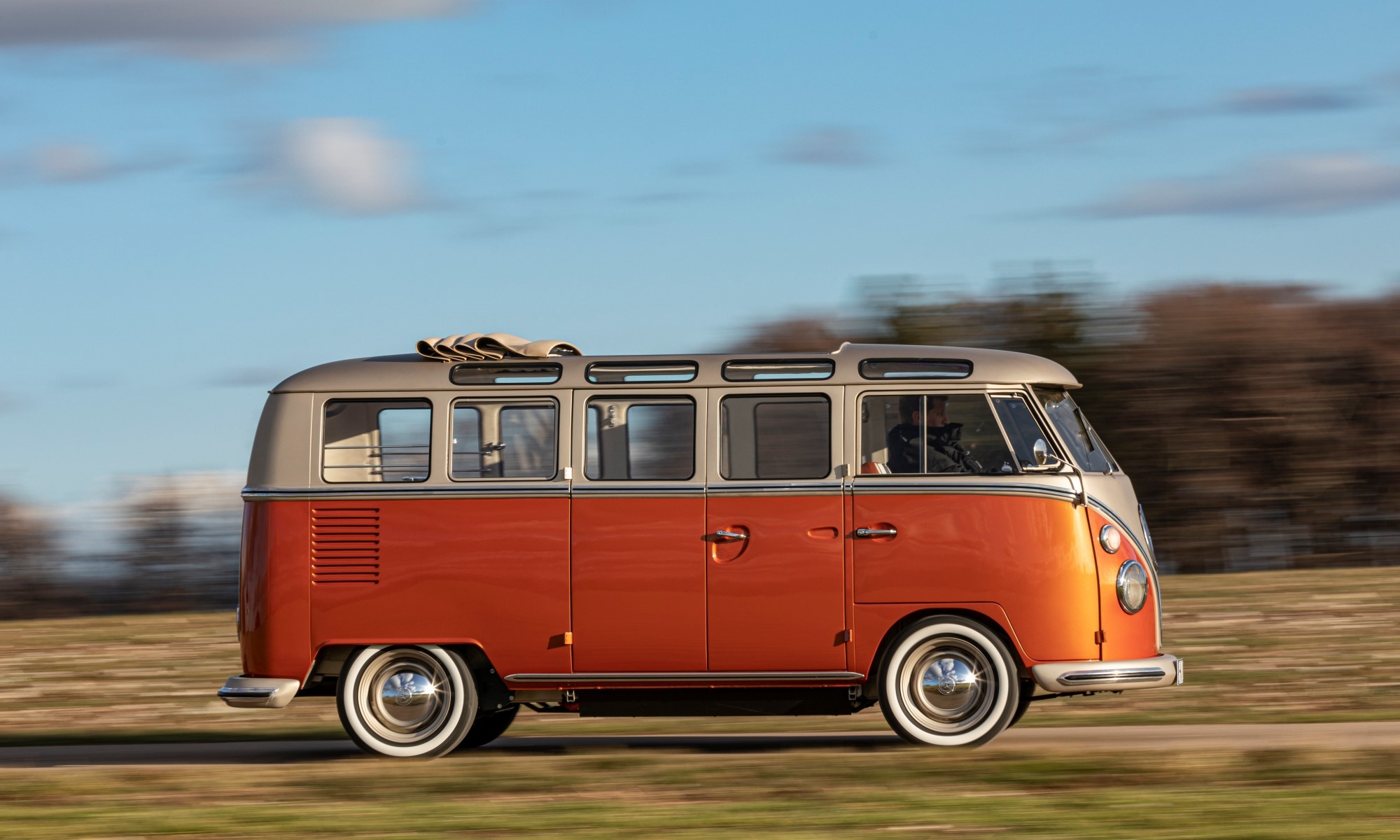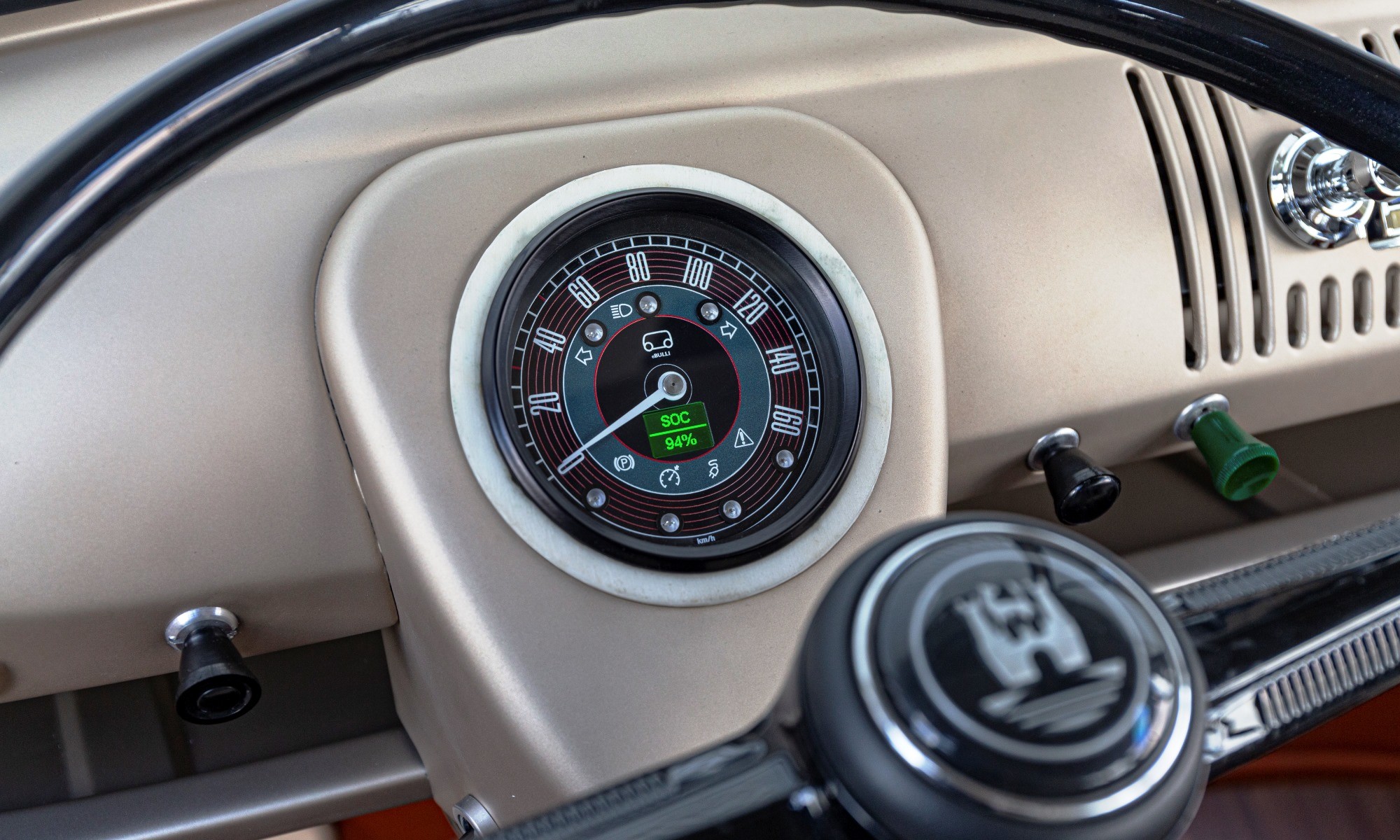How cool is this VW Bus? This Kombi, or Bulli as it is known in Germany was rebuilt by Volkswagen Commercial Vehicles (VWCV) and has been renamed the e-Bulli. The reason for its new name is, you guessed it, electric power. This isn’t just some show/concept vehicle either as this conversion is being offered for T1, T2 and T3 busses. Click here to read about VW’s electrification strategy.
Follow Double Apex on Instagram and Facebook where we share more car content.
Old made new
VWCV engineers and designers had the idea of switching an historic Bulli over to an all-electric drive system. The basis for this was T1 Samba Bus produced in 1966. The original 32 kW four-cylinder boxer engine gave way to a Volkswagen electric motor that delivers 61 kW with peak torque of 212 N.m, more than double the original engine’s 102 N.m. The new power figures make it the most powerful T1 bus ever made by VW. The VW e-Bulli has an electronically limited top speed of 130 km/h.
A lithium-ion battery powers the electric motor. The battery’s usable energy capacity is 45 kWh. The high-voltage battery is positioned centrally in the vehicle floor. This layout lowers the e-Bulli’s centre of gravity and improves its driving characteristics. The range on a full battery charge is more than 200 kilometres.
The new electric motor of the VW e-Bulli takes the place of the petrol engine. Power is fed to the rear wheels through a one-speed gearbox. A modern gear lever, which is now positioned between driver and front passenger seat, has the traditional P, R, N, D, B positions. In position B the driver can vary the degree of energy recuperation when braking.
Modern fittings
To further bring the e-Bulli into the new era the guys at VWCV have redesigned the suspension. It now has multi-link front and rear axles with adjustable shock absorbers and coilover struts. A new rack-and-pinion steering system and four internally ventilated disc brakes have also been adopted. New round LED headlamps with daytime running lights have taken the place of the older halogen units. LED charge indicators on the outside signal to a driver walking up to the e-Bulli how much charge the lithium-ion battery still has even before they step inside.
The cockpit has also been modernised. A new speedometer is based on the original and now incorporates a two-digit display for the state of battery charge. Further information is shown via a tablet integrated into the roof console. Music on board comes from a retro-style radio that is equipped with technology such Bluetooth and USB connectivity. The radio is linked to a sound system with out-of-sight components, including an active subwoofer.







![[UPDATED] Mazzei Formula Five Is One Man’s Obsession](https://doubleapex.co.za/wp-content/uploads/2024/08/Mazzei-Formula-Five-500x383.jpg)
![Ferrari Amalfi Introduced as Roma’s Replacement [w/video]](https://doubleapex.co.za/wp-content/uploads/2025/07/Ferrari-Amalfi-500x383.webp)
![Koenigsegg Sadair’s Spear is a Limited-Edition Track Weapon [w/video]](https://doubleapex.co.za/wp-content/uploads/2025/07/Koenigsegg-Sadairs-Spear-rear-500x383.webp)
Leave A Comment